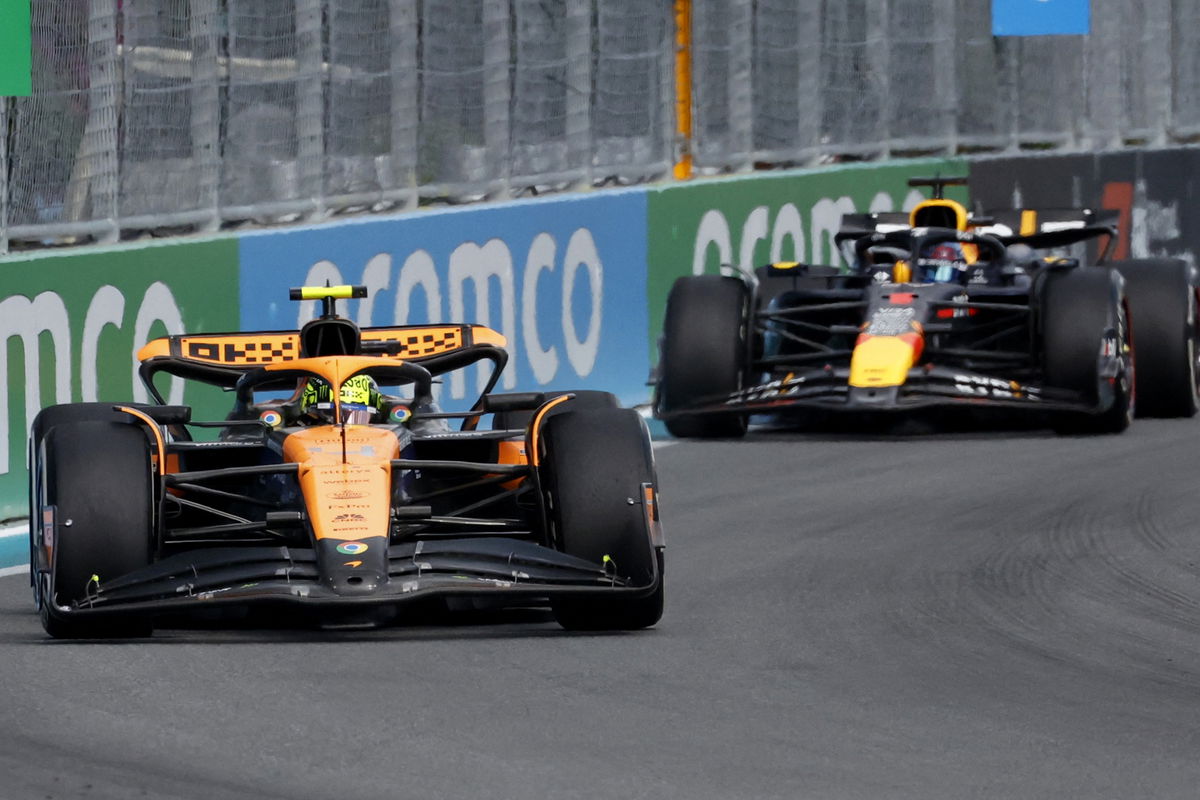

Red Bull started the year strongly, winning four of the opening five races – a brake failure at the Australian Grand Prix the only blot on its early-season copybook.
However, the Miami Grand Prix heralded a significant moment as Lando Norris recorded his first F1 win.
It marked only the second time Red Bull had been beaten on pace since the end of 2022 and the moment McLaren emerged as a threat in the 2024 title race.
Though Max Verstappen was second in the race, his fortunes were hampered by the appearance of the Safety Car, Wache noted that the Dutchman did not enjoy the fastest car that weekend.
“We didn’t change the car; we didn’t change the way we set up the car, so it looks like it’s more the others that did a big change instead of us,” Wache told Motorsport.com.
“But to be fair, in Miami we should have won the race. However, we were not the quickest any more. We were even and clearly something changed in terms of what was done, especially by McLaren.”
The Papaya squad’s upturn that weekend coincided with a significant upgrade package that included a front wing, front suspension, floor, sidepods, engine cover, rear suspension, beam wing, and other elements.
With only one instance of the package available, the team elected to fit it to Norris’ car.
To that point, McLaren had been competitive but short of the form it had shown towards the end of 2023.
From Miami, however, it became a consistent front runner and, in the races that followed, the pace-setter in many instances ahead of Red Bull.
“They were able to have less tyre degradation than everybody else and their package seemed to work very well afterwards,” Wache noted of McLaren’s form.
“I don’t know what they have done, you have to ask them and not me.”
McLaren’s upturn coincided with allegations that Red Bull had been instructed to remove a novel braking system from its cars over the course of the Chinese Grand Prix.
While speculation was rife, it’s a claim that has been repeatedly denied by the team.
Wache, therefore, disputes suggestions that the Miami downturn was related to suggestions it had been using a controversial, and potentially illegal, braking system.
“I know about ourselves and what we have done with the car,” he declared.
“The behaviour of the car was similar to what we had in China.”
It was “similar” and not the same because, for Miami, Red Bull had a new floor edge, though that was a means of weight reduction rather than outright performance.
“The car didn’t change, just to make it clear,” Wache insisted, speaking specifically on the notion of asymmetric braking.
“There was also nothing fundamental in the car set-up either that could explain why we were slower.”
While the Miami development was minor, there had been upgrades earlier in the season that had delivered in line with expectations.
“We brought an upgrade in Suzuka and in China and those things were working very well,” Wache said.
“In Miami, we were more or less there but during the race we saw that McLaren found the sweet spot in terms of their performance.”
While sizeable in terms of the number of new elements in Miami, the changes for McLaren needed an expert eye to identify.
Hence they were comparatively subtle, a point made by Wache, but combined to deliver a significant step forward for the team.
“We were more surprised by the step of the others,” he said of Red Bull’s performance relative to the competition.
“Also if you see what they have done [with updates], it was not massive… it was more that the whole car came together, so it was a very big surprise.”
Having headed the constructors’ championship in the early stages, Red Bull ultimately fell to third by the end of the year – partly due to rivals producing faster machines, but also a result of Sergio Perez failing to deliver.
McLaren meanwhile went on to win the championship for the first time in 26 years.






















Discussion about this post